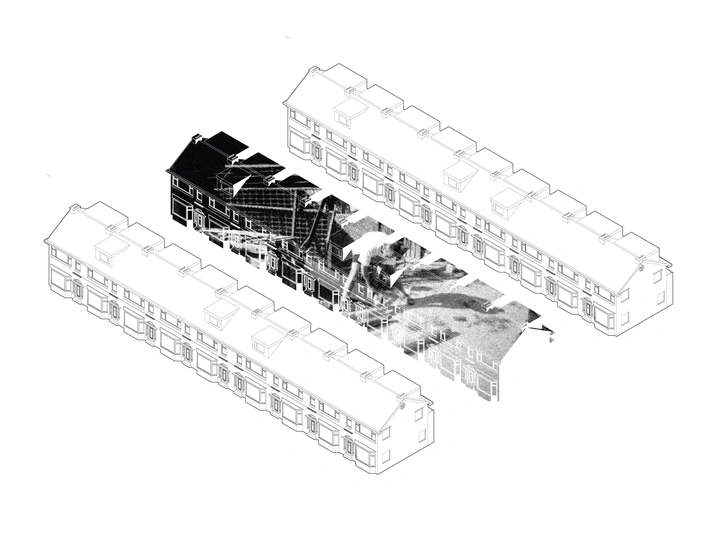Migrant production of spaces

Anna Mańka, originally from Poland and currently based in the Netherlands, is an architectural worker, spatial practitioner and researcher examining politics, labour, and production within different scales of the built environment. She hold a dual master degree of Architecture and Urbanism obtained at Eindhoven University of Technology (NL). In her practice, she focuses on architecture as a medium for research and expression, often questioning the contemporary labour dynamics and the desire for limitless growth.
Her work and interests relate to the relationship between space and objects with societal issues, especially within the dynamics of different power structures. Her perspective is shaped by her upbringing in the former Eastern Bloc, where the legacy of socialism intersects with the challenges of adapting to late-capitalist Western Europe. This duality informs her critical lens on labour and politics in the built environment.
She engages in individual and group projects on local and international level focused on topics of architectural work culture, creative industries workspaces, politics. Her activities include research, exhibiting, facilitating and teaching in mostly in The Netherlands, but also in Poland, The UK, Germany, and Italy, among others.
She participates in both individual and collaborative projects at local and international levels, addressing themes such as architectural work cultures, creative industry workspaces, and politics. Her activities span research, design, exhibitions, facilitation, and teaching, with a primary focus in the Netherlands, but also extending to Poland, the UK, Germany, Italy, and beyond.
The political changes in Eastern Europe after 1989, and later after 2004, brought new economic opportunities and changed perceptions of skills, labour, profit, and sacrifice. For Western Europe, this meant a steady influx of “cheap” construction labour powering the building sector—a trend that, with adjustments, continues to this day.
This ongoing exchange has shaped the built environment on both sides, influencing the quality, speed, and economic efficiency of construction. It prompts critical questions: What are the true costs and gains of relying on migrant labour in architecture? How do migrant workers contribute at each stage, from concept to completion?
This project investigates how migrant communities inhabit, adapt, and transform spaces—both their own and those of others—serving the development and profit of host countries, but also furthering personal and domestic goals in their home contexts. It builds on earlier research focused on Polish migrant workers in Germany and the UK, laying the groundwork for this expanded, pan-European phase, which shifts the emphasis towards archival and architectural investigation.
The core objective is to interpret the complex relationships between legislation, money, and material, reconstructing narratives of migrant domesticities and labour environments. By layering archival documentation with research and design, the project seeks to reveal the often-invisible architectural dimensions of migration—architecture as a silent witness to movement, adaptation, ritual, and everyday resilience. This interdisciplinary, international approach will culminate in narrative-based materials reflecting on the dynamic environments shaped by migrant communities in the 2025 reality, where migration has become a concern of the contemporary political agenda.